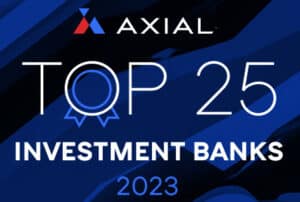
“Investment bankers and leveraged buyout investors in the 1980’s adopted EBITDA as a tool for figuring out whether a company had a profitability needed to service the debt that would need to be taken on to buy the company.”
EBITDA (earnings before interest, taxes, depreciation, and amortization) has become a ubiquitous tool in analyzing businesses. It’s what us investment bankers use when presenting our client’s businesses for sale. Its origin can be traced to someone in the mid-1970s who wanted his business to look better than what it appeared under Generally Accepted Accounting Principles (GAAP).
John Malone, former CEO of TCI Cable and now Chairman of Liberty Media (he’s also America’s second largest landowner), came up with this financial metric. Malone realized that scaling nationwide was the only way to get Hollywood studios and TV networks to negotiate on pricing, so he took on a lot of debt and reinvested every dollar of profit and plowed it back into his network. But that made his net profit look bad. So Malone then argued that EBITDA provided a clearer picture of his company’s operational performance by excluding expenses like depreciation and interest in his case.
Investment bankers and leveraged buyout investors in the 1980s adopted EBITDA as a tool for figuring out whether a company had the profitability needed to service the debt that would be taken on to buy the company. In addition to placing more debt on the balance sheet, a buyout would likely also change tax liabilities, so excluding taxes made sense, as well. And since this was a non-GAAP tool, they took it one step further and excluded some other expenses they considered not relevant, which they disclosed in footnotes to cover their backsides.
Soon enough, venture capital firms latched on to EBITDA to add puffery to elements of financial performance — prior to the dot-com bubble in the early 2000s, of course. The most egregious recent case has got to be WeWork Companies Inc. which took a nearly $1.6 billion net loss and turned it into a positive $467 million in “Community Adjusted EBITDA” by adding back both general and administrative and sales and marketing expenses. Audacious.
While EBITDA can and has been abused, it’s easy to see how EBITDA in highly capital-intensive cable and telecom companies is useful in viewing the underlying cash flow powering massive investments in those fixed assets. But is it the appropriate measurement for analyzing tire dealers particularly when it comes to depreciation? One might argue that a single retail tire store comprises a significant amount of fixed assets when you consider land, building, business systems, fixtures and equipment. But keeping up the appearance of a retail store requires continual investment just to stay competitive, so that’s not going away.
Commercial tire dealers have similar location investments, in addition to expensive service trucks that require replacement. And with wholesale tire distribution, it’s not so much the investment in fixed assets, but the investment in working capital that EBITDA does not account for. Supply chain issues in the tire business have recently seen wholesaler’s inventory dipping precariously low and then reaching all-time highs, straining balance sheets. One of the most vocal critics of EBITDA is Warren Buffett, the legendary investor and CEO of Berkshire Hathaway. Buffett has consistently spoken out against EBITDA, labeling it as a misleading metric.
Buffett argues that depreciation is not only a legitimate expense, but a vital one. He emphasizes that businesses must allocate a portion of their earnings to replace aging assets continually. By doing so, they ensure their long-term sustainability and competitiveness. Ignoring this expense can lead to a company’s deterioration and eventual decline. Warren Buffett prefers free cash flow “FCF) as a measure of a company’s value over EBITDA for several reasons.
Buffett believes that cash is the lifeblood of any business and that a company’s ability to generate and manage cash is a critical determinant of its value. FCF, unlike EBITDA, directly focuses on the actual cash generated by a company’s operations. It considers not only operating profitability, but also capital expenditures and changes in working capital, which are essential for understanding a company’s cash-generating ability.
Buffett places great importance on how a company allocates its capital. He prefers businesses that generate more cash than they need for reinvestment, as this surplus can be used to reward shareholders through dividends, stock buybacks or further investments. FCF allows investors to assess whether a company has excess cash available for these purposes, whereas EBITDA does not provide this insight. FCF is often considered a more conservative and resilient measure of a company’s financial health. It accounts for the sustainability of a company’s cash generation over time. By analyzing FCF trends, one can better assess whether a company’s profits are durable and if it can weather economic downturns or unexpected challenges. Buffett is known for his long-term investment horizon.
FCF provides a more robust foundation for assessing a company’s long-term growth potential and ability to create enduring value. It reflects a company’s capacity to reinvest in its business, repay debt and reward shareholders over the long haul.
Michael McGregor is a Managing Director at FOCUS Investment Banking (focusbankers.com/tire-and-service) and advises and assists multi-location tire dealers on mergers and acquisitions in the automotive aftermarket. For more information, contact him at [email protected]. This article was previously published on Modern Tire Dealer.













